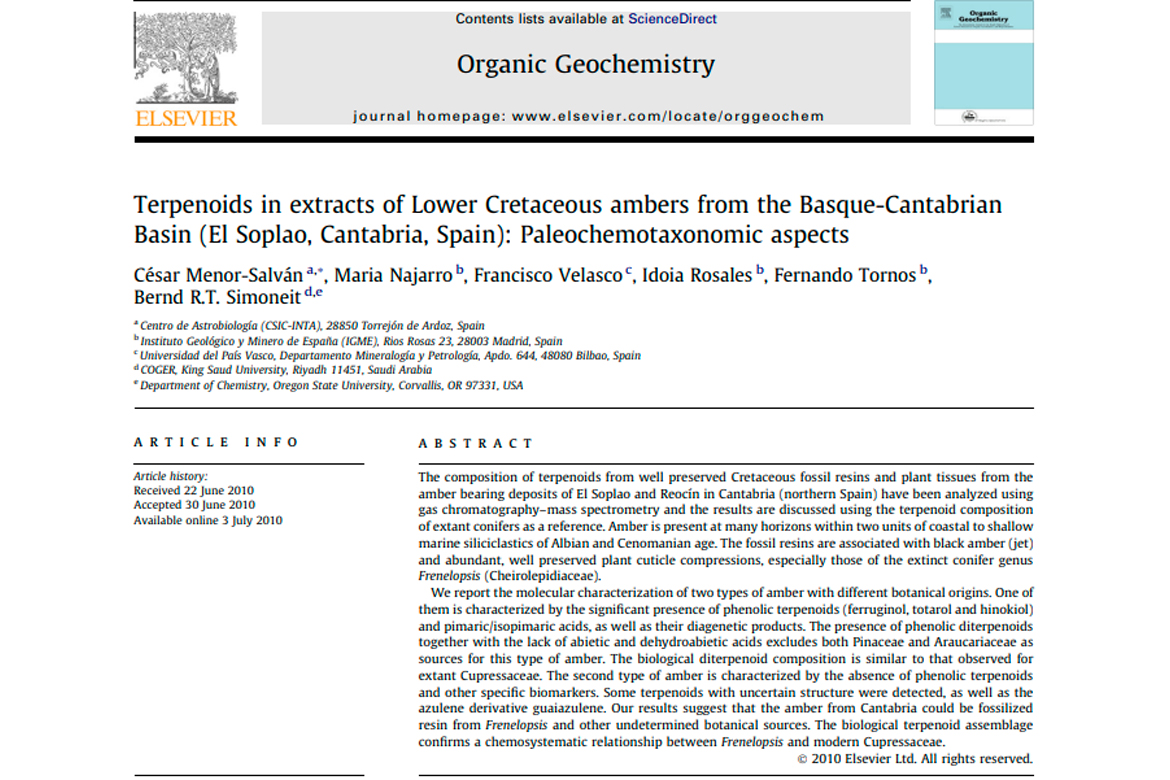Abstract:
The composition of terpenoids from well preserved Cretaceous fossil resins and plant tissues from the amber bearing deposits of El Soplao and Reocín in Cantabria (northern Spain) have been analyzed using gas chromatography–mass spectrometry and the results are discussed using the terpenoid composition of extant conifers as a reference. Amber is present at many horizons within two units of coastal to shallow marine siliciclastics of Albian and Cenomanian age. The fossil resins are associated with black amber (jet) and abundant, well preserved plant cuticle compressions, especially those of the extinct conifer genus
Frenelopsis (Cheirolepidiaceae).
We report the molecular characterization of two types of amber with different botanical origins. One of them is characterized by the significant presence of phenolic terpenoids (ferruginol, totarol and hinokiol) and pimaric/isopimaric acids, as well as their diagenetic products. The presence of phenolic diterpenoids together with the lack of abietic and dehydroabietic acids excludes both Pinaceae and Araucariaceae as sources for this type of amber. The biological diterpenoid composition is similar to that observed for extant Cupressaceae. The second type of amber is characterized by the absence of phenolic terpenoids and other specific biomarkers. Some terpenoids with uncertain structure were detected, as well as the azulene derivative guaiazulene. Our results suggest that the amber from Cantabria could be fossilized resin from Frenelopsis and other undetermined botanical sources. The biological terpenoid assemblage confirms a chemosystematic relationship between Frenelopsis and modern Cupressaceae.

